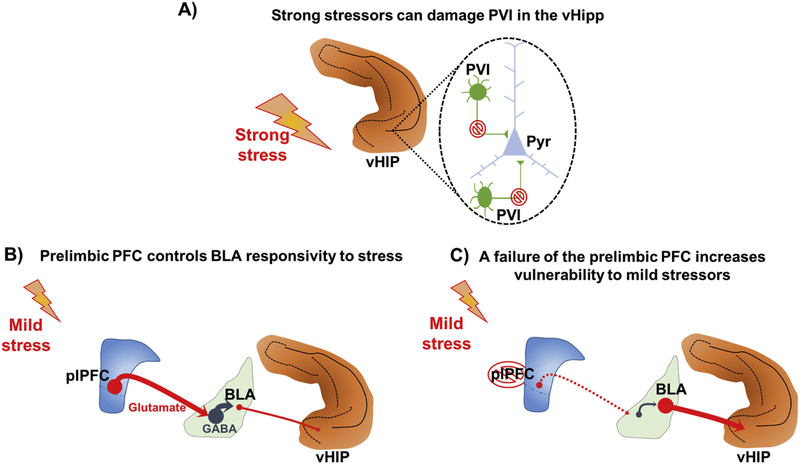Figure 1 –
Stress as a risk factor for schizophrenia development. (A) Strong stressors during critical periods impact the ventral hippocampus (vHip) leading to a dysfunction of parvalbunin interneurons (PVI), or even to a PVI cell loss, which in turn contributes to the hyperactivity of glutamatergic pyramidal neurons that will drive a midbrain hyperdopaminergic state that underlies the emergence of psychosis. Alternately, genetic or gestational factors can increase susceptibility to mild stressor. (B) The prelimbic portion of the medial prefrontal cortex (plPFC) has been shown to control basolateral amygdala (BLA) responsivity to stress. (C) A failure of the plPFC to regulate BLA reactivity to stress could lead to a BLA glutamatergic overdrive to the vHipp which could damage PVI, contributing to the emergence of a hyperdopaminergic state.

